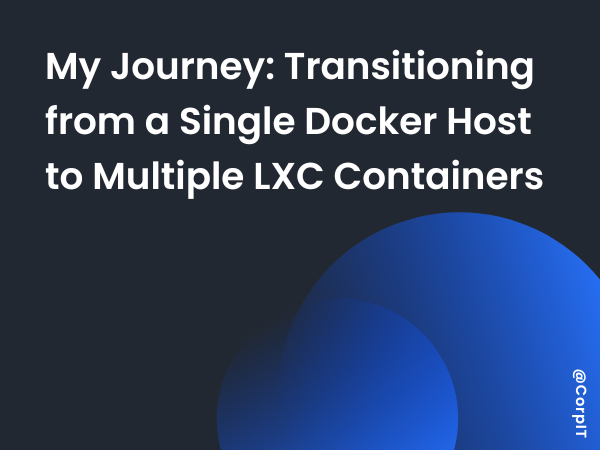Having been a dedicated user of Portainer for quite some time, I’ve found it to be a reliable tool, offering a comprehensive overview of my container environment. Nonetheless, as with any platform, there are drawbacks. Recently, my interest was piqued by LXC containers after watching an informative video. I pondered, “Could a transition from Portainer to LXC containers be beneficial?” After making the switch, I can confidently say it has been a positive experience. In this piece, I’ll delve into the reasons behind my decision, the process of transitioning, and offer guidance for those contemplating a similar move in their container setup.
Table of Contents
Drawbacks of Portainer
- Single Point of Failure: Relying on Portainer within a single node or VM left me vulnerable. Any issue with the setup could potentially bring down all my containers.
- Port Management: Juggling different ports for various services proved cumbersome. Personally, I preferred consolidating services under port 80 for ease of access.
- Log Debugging: Troubleshooting logs was a bit convoluted due to their centralized location.
- Curiosity: The desire to explore something new served as a catalyst for considering alternatives.

Transition Process
- Docker Compose Files: To facilitate seamless deployment, I transitioned to Docker Compose files, enabling swift setup and replication of containers.
- LXC Container Setup:
- Installation of Docker within LXC containers, albeit nested, proved feasible.
- Integration of an NFS share into LXC containers, albeit not natively supported, was achieved through custom configurations (refer to my GitHub repository for detailed instructions).
- Template Creation: Once a container was configured to my specifications, I established it as a template for the streamlined creation of subsequent containers.

Considerations for Adoption
- Proxmox Users: Transitioning from Portainer to LXC containers is relatively straightforward for those already utilizing Proxmox. However, users of alternative solutions lacking LXC support may find sticking with Portainer more practical.
- GUI Preference: For those who value a graphical interface, Portainer continues to be a viable option.
Conclusion
This transition reflects my personal journey. Should you be contemplating a similar shift from Portainer to LXC containers, my experiences and outlined steps could serve as a helpful guide. Should you encounter any challenges along the way, feel free to reach out. I’m more than willing to offer assistance.









